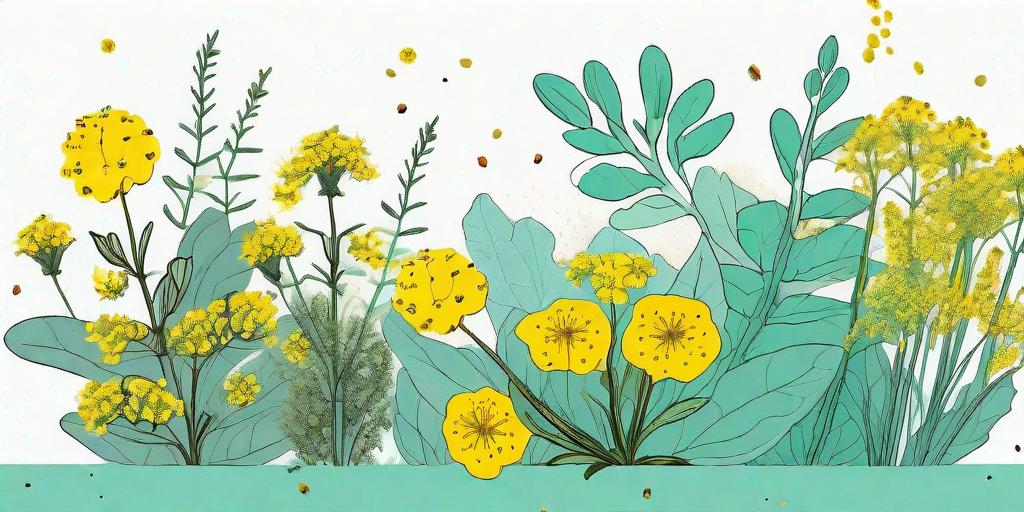
If you're a foodie with a green thumb, or even if you're just starting out in the world of gardening, the wild mustard plant is a must-have addition to your garden. This zesty, versatile plant is not only a culinary delight but also a visual treat for your garden. So, let's dive into the world of wild mustard and see how it can spice up your life and your garden.
What is the Wild Mustard Plant?
The wild mustard plant, scientifically known as Brassica kaber, is a member of the mustard family. It's a hardy, fast-growing plant that can be found in many parts of the world. Its bright yellow flowers and lush green leaves make it a visually appealing addition to any garden.
But the wild mustard plant is not just a pretty face. Its leaves, seeds, and flowers are all edible and packed with flavor. They can be used in a variety of dishes, from salads and stir-fries to pickles and condiments. So, if you're looking to add a little zing to your meals, the wild mustard plant is the way to go.
How to Grow the Wild Mustard Plant
Now that you're intrigued by the wild mustard plant, you're probably wondering how to grow it. Fear not, dear reader, for the wild mustard plant is as easy to grow as it is delicious.
Firstly, you'll need to choose a sunny spot in your garden. The wild mustard plant loves the sun and needs at least six hours of sunlight each day. It's also a fan of well-drained soil, so make sure your chosen spot doesn't get too waterlogged.
Once you've chosen your spot, it's time to plant your wild mustard seeds. You can sow them directly into the soil in early spring, covering them lightly with soil. Water them well and wait for them to sprout. It's that simple!
As your wild mustard plants grow, make sure to water them regularly but avoid overwatering. They also don't need much in the way of fertilizers, making them a low-maintenance choice for your garden.
Harvesting and Using the Wild Mustard Plant
When your wild mustard plants are fully grown, it's time to harvest. You can pick the leaves, flowers, and seeds as you need them for your culinary creations. The leaves are best when they're young and tender, while the flowers can be picked when they're in full bloom.
The seeds can be harvested when they're fully mature and dry. They can be used to make mustard, a popular condiment that's sure to add a kick to your meals. The leaves and flowers can be used fresh in salads or cooked in a variety of dishes.
Benefits of the Wild Mustard Plant
Beyond its culinary uses, the wild mustard plant has a number of other benefits. For one, it's a great plant for pollinators. Its bright yellow flowers attract bees and butterflies, helping to support these important creatures.
The wild mustard plant is also a good companion plant. It can help to deter pests from your other plants, making it a useful addition to your garden. Plus, its fast growth can help to suppress weeds, saving you some gardening work.
Finally, the wild mustard plant is a hardy plant that can tolerate a range of conditions. This makes it a good choice for beginner gardeners or those with less-than-ideal garden conditions.
Frequently Asked Questions
Is the wild mustard plant invasive?
While the wild mustard plant can spread quickly, it's not generally considered invasive. However, it's always a good idea to keep an eye on its growth and control it if necessary.
Can I eat the whole wild mustard plant?
Yes, the leaves, flowers, and seeds of the wild mustard plant are all edible. However, the leaves are best when they're young and tender, and the seeds need to be fully mature before they're harvested.
How do I use the wild mustard plant in cooking?
The wild mustard plant is incredibly versatile in cooking. The leaves can be used in salads, stir-fries, and soups, while the flowers make a pretty and flavorful garnish. The seeds can be used to make mustard.
Conclusion
So there you have it, the wild mustard plant in all its glory. This zesty, versatile plant is a great addition to any garden, offering both visual appeal and culinary delights. So why not give it a go? Your taste buds (and your garden) will thank you!











